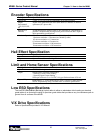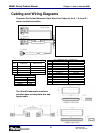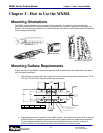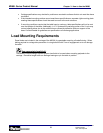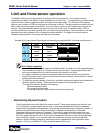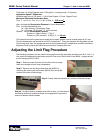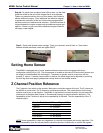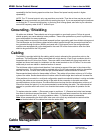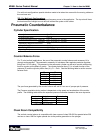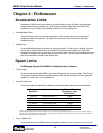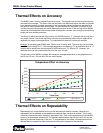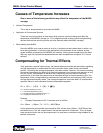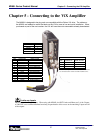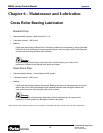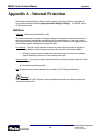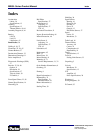
MX80L Series Product Manual Chapter 4 - Performance
Parker Hannifin Corporation
36
Causes of Temperature Increases
One or more of the following conditions may affect the temperature of the MX80L
carriage:
• Ambient Temperature
This is the air temperature that surrounds the MX80L
• Application or Environment Sources
These are mounting surfaces or other items which produce a thermal change that affect the
temperature of the MX80L carriage (i.e. X/Y configurations with motors or other heat generating
devices that heat the mounting surface and thus thermally affect the MX80L carriage).
• Motor heating from MX80L
Since the MX80L uses a servo motor as its drive, it produces no heat unless there is motion, or a
force being generated. In low duty cycle applications heat generation is low, however as duty
cycles increase, temperature of the MX80L will increase, causing thermal expansion of the base.
With very high duty cycles these temperatures can reach temperatures as high as 30° C above
ambient.
Compensating for Thermal Effects
If the application requires high accuracy, the thermal effects must either be removed by regulating
carriage temperature or compensated for with a correction factor added to the commanded
position. Controlling the carriage temperature is the best method. However, this means controlling
the ambient temperature by removing all heat/cold generators from the area and operating at very
low duty cycles. Compensation is the other way of achieving accuracy without sacrificing
performance. In this case the system must be exercised through its normal operating cycle. The
temperature of the carriage should be measured and recorded from the beginning (cold) until the
carriage becomes thermally stable. This carriage temperature should be used in a compensation
equation. Below is the fundamental thermal compensation equation:
C
d
= (I
d
- ((I
d
) * (T
e
) * ∆T))
C
d
= Corrected displacement (mm)
I
d
= Incremental displacement (mm)
T
e
= Thermal Expansion (0.000022 mm/mm/° C)
∆T = Temperature Differential from 20° C
Example:
• Carriage Temperature of 32° C required move of 100mm
Cd = 100mm - (100mm * Te * 12° C) = 99.9736mm
In this example the commanded move should be 26.4 microns less (100mm – 99.9736mm) than
the desired move. This will compensate for the thermal expansion of the scale. This is a simple
linear correction factor and can be programmed in to most servo controllers using variables for the
position commands.
Daedal Division
Irwin
,
Penns
y
lvania



